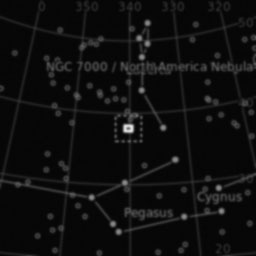
LBN 438
Faint nebula in the constellation Lacerta.

Faint nebula in the constellation Lacerta.
LBN 438 is a faint nebula in the constellation Lacerta.
| Object: | LBN 438 |
| Date of exposures: | 20.09.2022, 21.09.2022, 06.10.2022, 07.09.2023, 08.09.2023 |
| Exposures: | Lum: 119 × 180', Blue: 90 × 180'. Green: 93 × 180', Red: 115 × 180', H-alpha 5nm: 19 × 480', sum: 23,5 h |
| Telescope: | 10'', F4 Newton |
| Focal length: | 1000mm |
| Filter: | Astrodon E-Series, RGB, Ha 5nm |
| Camera: | ASI 1600 MMC Pro |
| Guiding: | Off Axis Guider, Lodestar |
| Mount: | EQ8 |
As with most faint nebulae, we do not have a good distance estimate for it. This magnitude 16 nebula has a surface brightness of only 23 mag. It is about 30 arc minutes long. There are 2 fascinating aspects to this object - its shape and its color. The shape of the nebula is reminiscent of a hand reaching up into the sky. What is the cause of the unique 4-lobed shape at the top of the nebula? Sometimes there are bright stars nearby whose stellar winds shape and hollow out nebulae like this one, but nothing like that is seen here.
LBN 438 may be an ERE (Extended Red Emission) object, which could explain the red glow. ERE is a broad emission in the red region, between 600 and 800 nm, and is observed in some interstellar objects such as planetary nebulae, reflection nebulae, HII regions, and high-latitude galactic dark nebulae. It is thought to be the result of photoluminescence of dust by far-ultraviolet (FUV) photons.
The red glow in the image background is ionized hydrogen (HII) excited to glow by radiation from surrounding stars.
The distant galaxy at the top of the image is UGC 12137, which is 220 million light-years away and 120,000 light-years across, about the same size as our galaxy.